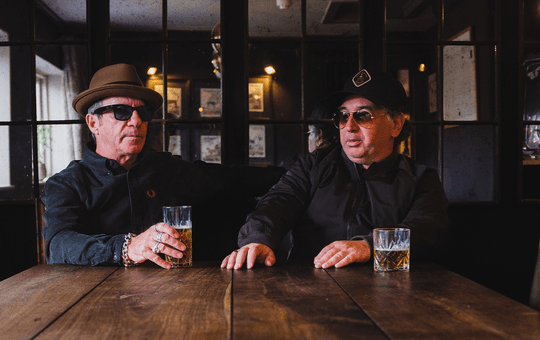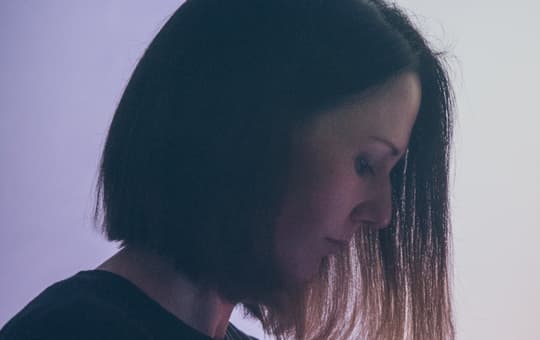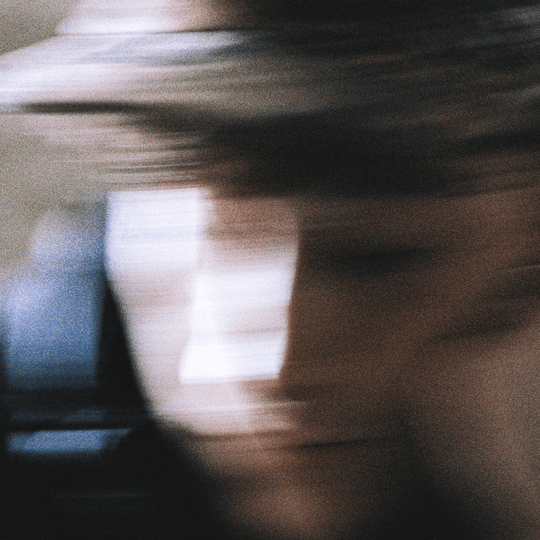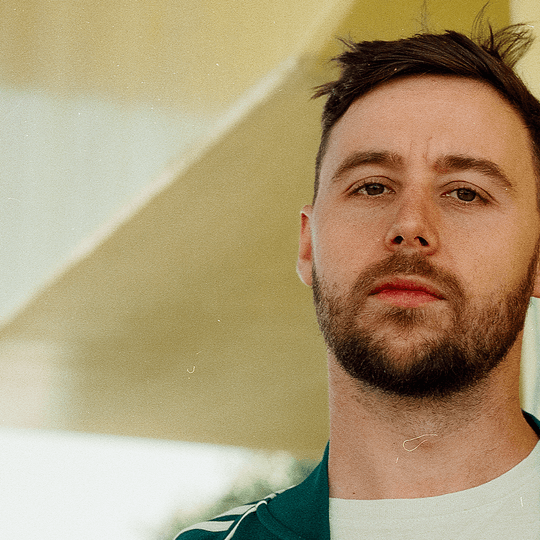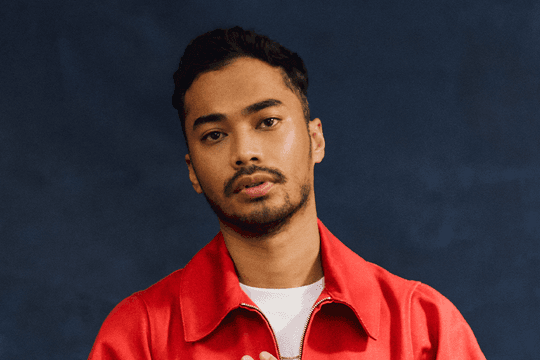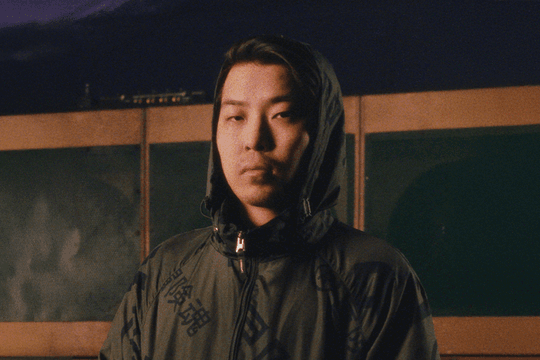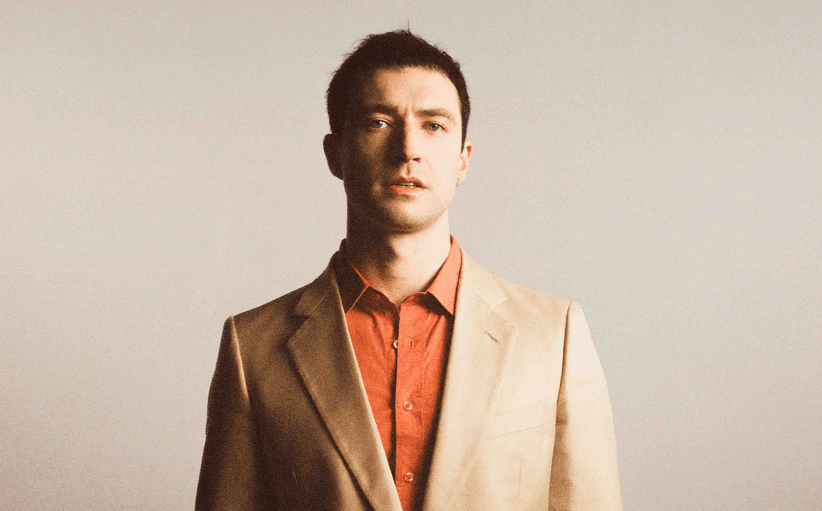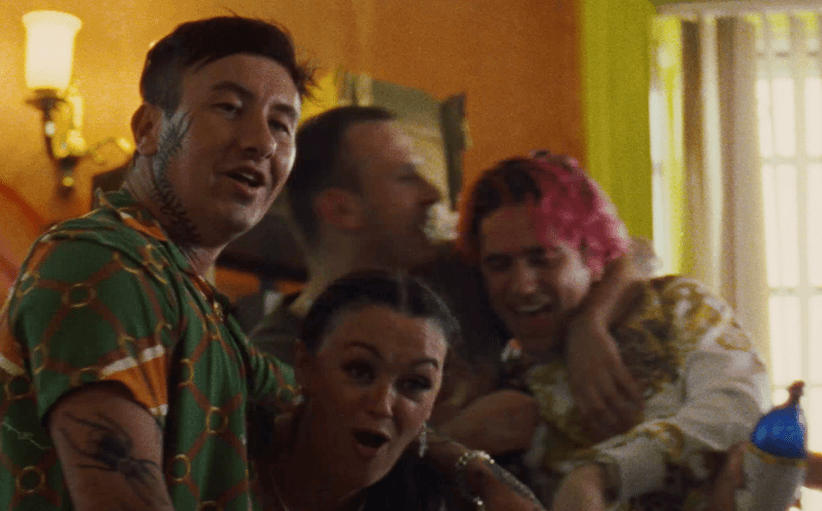Mala interview: "I don't want to be weighed down. I just want to vibe and create."
“Someone once said to me “On every street corner in New York, there’s a rapper”. Well, on every street corner in Havana, there’s a musician. It doesn’t matter whether he plays the congas or piano or bass, it’s the energy. In the side-roads and doorways. I think live music is Cuba is something that is definitely more integrated in an everyday kind of situation because picking up an instrument is still very expected. The Cuba I saw and fell in love with was the Cuba where the music would get people up out their seats, dance, sing, really have it and lose themselves, and it’s people of all ages too. It’s a beautiful thing, man.”
To listen to Mala talk about his time in Cuba is to listen to a sincere and humble man who is deeply aware of the social power and spirituality of music. A true innovator, this English-Jamaican dubstep producer has spent almost a decade cultivating not just a sound but an ethos; an ethos that retains a deep affinity with sound-system culture and the stripped-back, echoing riddims of dub to figure dubstep as a totalising, physical experience. Ever since Mala cut a box of original dubplates for his first DJ appearance back in 2004, his work as co-founder of the DMZ and Deep Medi Musik imprints and as one half of production duo Digital Mystikz has mediated between the pressurised frequencies of dubstep and the spiritualism of Jamaican musical history to create a sound that has travelled beyond South London to an international audience.
As one of the original figureheads of this now global scene Mala has produced one of the most distinctive and ground-breaking catalogues in modern British electronic music and whilst dubstep has taken many a divergent path, Mala has remained true to the sound that he forged and mastered. After several 12” and EP releases and 2010’s ‘Return II Space’ this month has seen the release of his first full length solo LP ‘Mala In Cuba’, which through his involvement in Gilles Peterson’s Havana Cultura project has briefly refigured this ethos from one Caribbean island to another – and brought us one of the finest examples of a dubstep LP to date. It feels fitting that a man who uses the word “build” instead of “produce” to describe his creative process should commit himself to a project dedicated to bringing two rather different worlds together; the dubstep sound of London and the multitude of Latin, African and Caribbean influenced grooves that he found in Havana.
His work has become amplified on ‘Mala In Cuba’ not in loudness but in tactility. The coolness of older Digital Mystikz productions – with their deftness of touch and willingness to pull through swathes of minimal reverbs of bass before anything resembling a ‘drop’ weighs in – has met with these Cuban grooves in a way that has given the productions a heartbeat rather than a pulse. The arrangements are more robust, more naturalistic. They lead from the hips, swaying with an intensity that feels like a spiritual brother to the cosmic, menacing bass-weight of DMZ whilst never lessening their Caribbean elements.
Through the ethos of this cross-cultural project ‘Mala In Cuba’ has become one of his strongest artistic statements of intent to date, charting a personal journey into the unknown with remarkable clarity of vision, open-mindedness and eclecticism that reminds us why dubstep is one of the most fascinating genres of our generation. In working with musicians and singers in a series of intimate live sessions Mala sought to embody the sensuality of Cuban instrumentation whilst structuring the album with the mindset of (in his own words) a “Nintendo generation” producer who builds sounds from the ground up. In this sense, ‘Mala In Cuba’ is representative of not only the working arrangement that bore it, but the spiritual and creative relationship that Mala the cultural outsider and the band as cultural insiders shared.
“Regardless of what you hear in the end or how you’ve structured it, they’re always there with you” – Mala
This task of communicating sounds across oceans whatever the practical setting was what Mala took away from his time in Havana, and what stayed with him once back in his home studio. “At the end of the day sound is sound no matter where it comes from. It’s about the human spirit. When you’re watching people jam and record you get a totally different sense of the material that you’re working with. I basically just got handed the best 60G Cuban sample pack that’s every existed,” he laughs. “It has totally changed my perspective on making music forever, if I’m being honest. Every track has the bones and the spirit of Cuba. I just built these pieces together. For me it’s so important to retain that essence so regardless of what you hear in the end or how you’ve structured it, they’re always there with you.”
As much as he was aware of their differences in style, tradition and technical musicianship the project ignited something within Mala that he had never experienced before, and duly bred more than a few introspective moments about the nature of his personal involvement. “With ‘Mala In Cuba’ I had to be realistic and think about who I am and what I do. I really had to break myself down. I’m not Cuban. There’s no way I could have built a traditional Cuban record. I had to be honest with myself about my ability to incorporate the beauty that they gave me into my own style. That’s what was consciously at the forefront of my mind.”
His passion for the LP seems miles away from his admission that it’s one he “would have been quite happy never to have made”, and a task he undertook only because of an offer made to him by Gilles Peterson through his label Brownswood and the Havana Cultura project. When Peterson approached him with the idea of an LP that would align his own work with the project’s ethos of promoting contemporary Cuban culture to a global audience, he was initially apprehensive. “I told him ‘Look, I know nothing about Cuban history or music other than Buena Vista Social Club, so I don’t know if I’m the right person to do this well.’ I thought that if I were to take it on I should really make the effort to educate myself about Cuba, but then I came round to the idea of going there with a totally fresh mind, ears and eyes; to take it purely for what it is and what it means to me.”
The first step of this journey into the unknown could never have been taken on untouched ground. The conscious involvement between or reaching out from one musical culture to another is a long-debated and aesthetically and ethically contested subject, and often breeds accusations of appropriation or a ‘dumbing-down’ of musical cultures. From Paul Simon’s work with Ladysmith Black Mambazo on ‘Graceland’ to the checkered relationship between early blues and British beat music of the 1960s, or more recent controversies around Diplo’s use of global “ghetto” music, modern examples are as different as they are numerous. Although the project is explicit in its aim of providing a respectful, cross-cultural creative outlet Mala nevertheless felt fair pressure in doing justice to his own production style whilst avoiding reducing traditional Cuban music to a series of token signifiers. Their own experiences needed to be woven into each track. They had to represent what is their own.
The quality of feeling he brings to the arrangements lies in his ability to play the role of cautious yet willing interpreter; realigning himself in a way that suited this new live working arrangement whilst always keeping the ethos of dubstep at the forefront of his mind. The haunting brass hook that punctuates Changuito drifts into a soundsystem-style air siren that feels relocated from Kingston to Havana, lingering densely above layers of rapid-fire percussive grooves until a wave of chest-tickling bass rolls in and makes you shiver from head to toe. You feel at once steeped in the sultry rhythms of a Cuban brass band on a balmy summer night and the eerie darkness of the DMZ dance-floor, head bent low in a basement club in south London.
Evoking this duality of experience was something that really stayed with Mala through the sessions. “There was definitely a point in the early stages of the recording process where I wasn’t sure what I was going to do with the material or what was expected of me, but then I realised that the only way I was going to be happy sharing the final product with people was if I did it my own way. Ask me to hum a C note and I cant do it, but if you play a C note to me, I will feel it. When I’m making music, it’s the feeling. I don’t necessarily go on my knowledge or understanding or even what I think I know, I just go based on pure feeling, and in that respect I think that the musicians that I’ve worked with live in the best of both worlds.”
He eventually felt validated in his minimal research by his belief that “all the Cuban artists that I work with bring their island with them. Whether they like it or not, Cuba is a part of them. I feel I could build these experiences into an album because their spirit and energy meant that it wasn’t something that I had to sit and think about. That’s the worst thing to happen in the studio. Don’t get me wrong, intelligent thought can kick start your imagination and play a vital role in your creativity, but at the same time I don’t want to be weighed down. I just want to vibe and create.”
The power of this emotional connection is evident in the LP’s narrative flow. From its introductory improvisational percussion and piano hook – sprinkled with conversation and laughter – you get the feeling of a band just warming up; cracking their fingers, rolling their necks, getting steady on their feet for the coming hour. What’s fascinating to learn with this in mind is that whilst the instrumentation is taken from the live sessions, it was mediated through a tailored structuring process defined by Mala’s own technique.
On arriving in Havana in early 2011 to “one of the most beautiful studio’s I’ve ever seen”, Mala met with renowned Cuban jazz pianist Roberto Fonseca, his band and a variety of local musicians and immediately laid down his production mindset as a template that they could build upon. “I told them straight off that 140bpm is generally the tempo that I like to work at, so what they would do was jam for a few minutes, get a groove on a level with that tempo, and then say “Okay, we’re ready now.” They’d record five or ten minutes of live music, repeat that over and over, and it was their grooves and rhythms around the 140bpm mark that I made the album from.”
After several visits to Havana this technique became the conceptual making of the LP as we hear it today; a producers LP with the soul and passion of a band as its core elements. It’s a surprising release because of this too. There is such a rich sense of rhythmic variety and complexity in the tracks that I tell him I would be hard pressed to believe – had he not told me so – that nearly a years worth of sessions were figured exclusively around one, strictly delineated tempo.
“These people are not making music for entertainment. They’re doing something deep with their sound but I can’t pretend to tell you what exactly that is or why they do it.” – Mala
This is when Mala’s peaceful demeanour shifts ever so. He’s clearly passionate about observations like these. “See, this is the really interesting thing to me. A lot of people are talking now about dubstep about 140bpm as a thing of the past – all, “oh, that sound, it’s dead now, it’s all about post-dubstep this and post-dubstep that” – and that is just craziness to me because it’s so lazy. There is so much you can do with any tempo of music. There is only one track on the whole album that is not 140bpm. It’s all about placement, about the pace, the groove and the frequency. It’s about time, space and how you picture them in your mind.”
Such introspection seems characteristic of Mala’s mindset. The end of every question was framed by a thoughtful silence, choosing the right words to say in the right way. Through years of listening to his music I’ve always found Mala to be a deeply spiritual man and he hums in agreement when I tell him so, yet on matters of spirituality he’s reserved. The affinity with Jamaican musical culture that so pervades the DMZ catalogue harks to a spiritualism that finds a relative kinship with the Cuban sensibility, and it’s something that has remained with Mala to this day.
“Roberto Fonseca and his band are deep, deep brehdaman. You can really hear it in their music. Danay Suarez is very spiritual too; you can hear it in her lyrics and the way that she sings them. These people are not making music for entertainment. They’re doing something deep with their sound but I can’t pretend to tell you what exactly that is or why they do it. That’s for them to express through their art, and that’s definitely something that I connect with. What I had consciously in my mind first and foremost was that I wanted to respect the musicians that I work with. They were so open and genuine with their musicianship and their energy so I wanted to respect them as people, as well as their relationship to Cuba and its culture. It’s all about respect.”
‘Mala In Cuba’ is out now on Brownswood Electric Records

